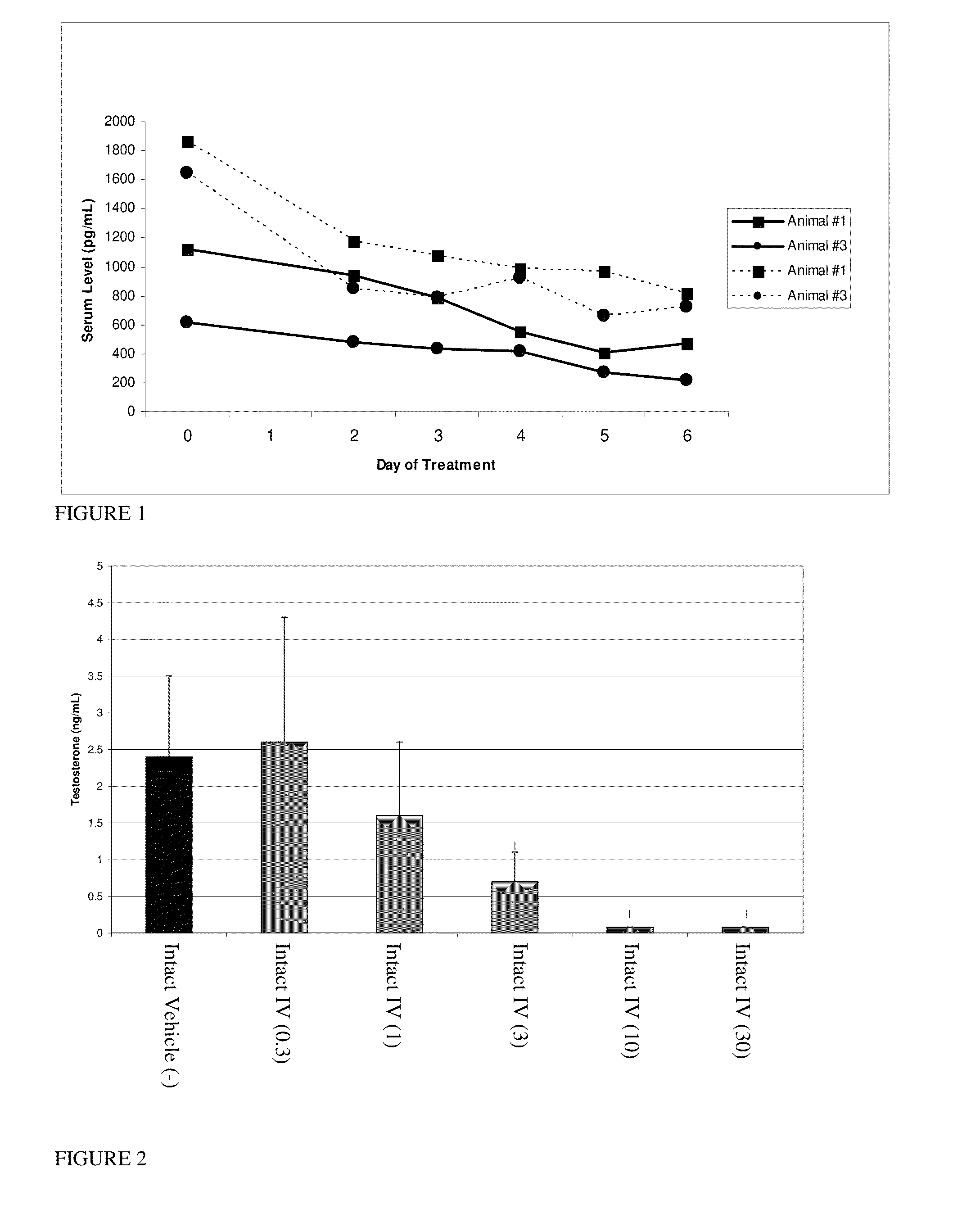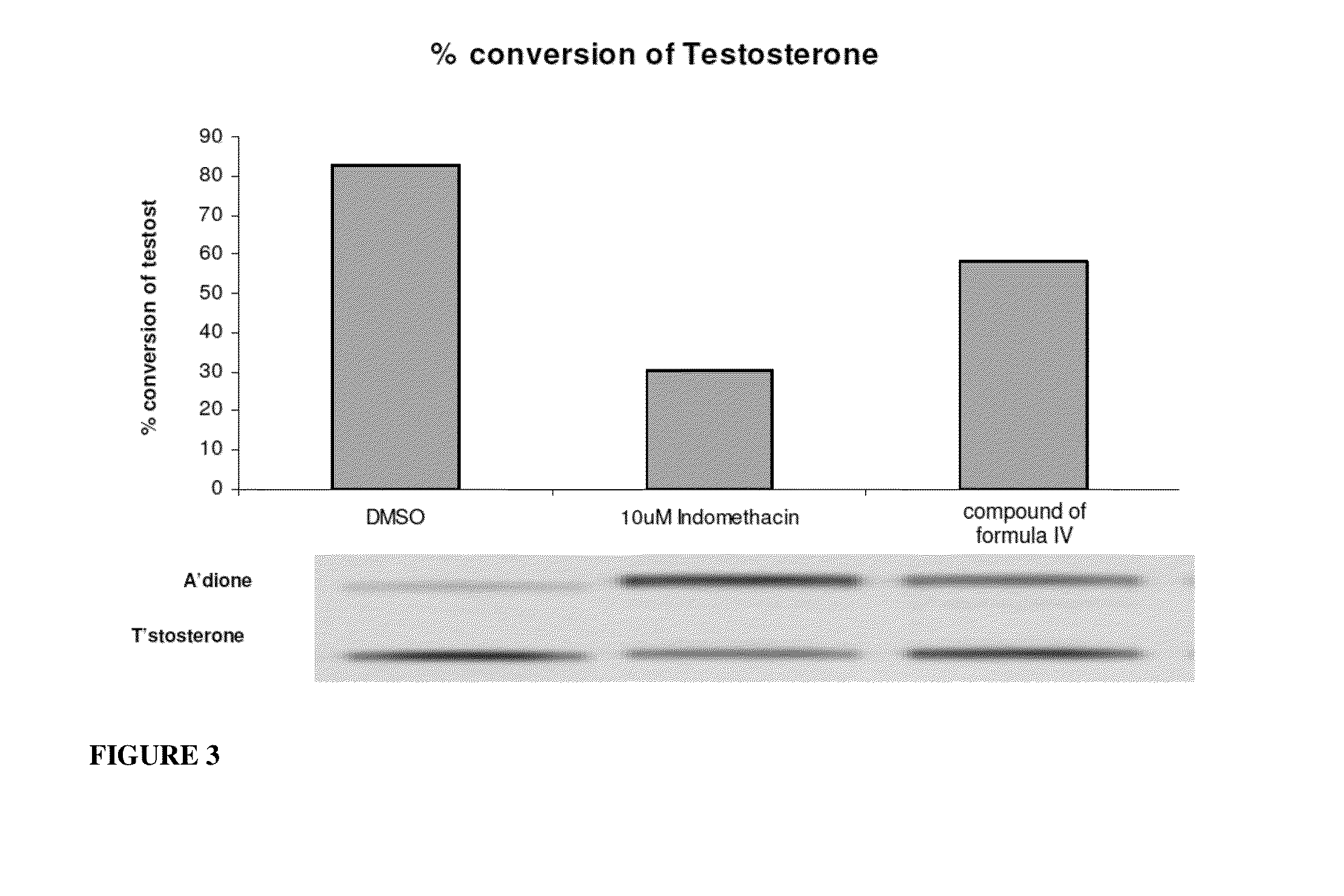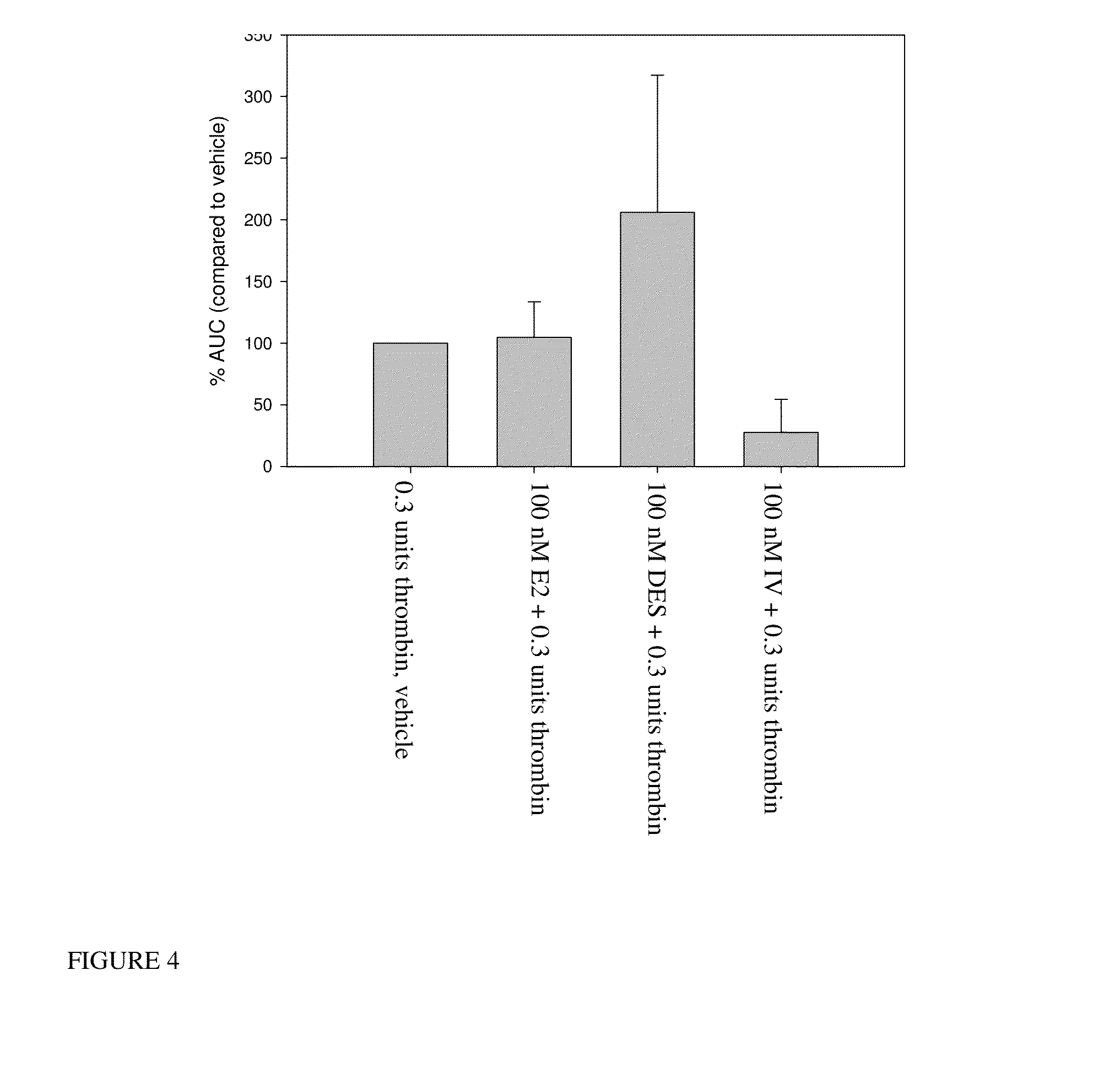Estrogen receptor ligands and methods of use thereof
a technology of estrogen receptor and ligand, which is applied in the field of estrogen receptor ligand, can solve the problems of severe cancer related symptoms, poor prognosis of mcrpc men, and less than 16 months of life expectancy of men with mcrpc, and achieve the effects of increasing radiographic progression free survival (rpfs) and increasing metastasis free survival (mfs)
- Summary
- Abstract
- Description
- Claims
- Application Information
AI Technical Summary
Benefits of technology
Problems solved by technology
Method used
Image
Examples
example 1
General Synthesis Procedures for Compounds of Formulas II-XII and Synthetic Intermediates
[0551]The organic solvents, surfactants and antioxidants, etc., they may be used in the compositions described herein are typically readily available from commercial sources. For example, PEG-300, polysorbate 80, Captex™ 200, Capmul™ MCM C8 may be purchased, for example, from Dow Chemical Company (Midland, Mich.), ICI Americas, Inc (Wilmington, Del.) or Abitec Corporation (Janesville, Wis.).
[0552]The estrogen receptor ligands described herein may be prepared in a number of ways well known to those skilled in the art. For example, the estrogen receptor ligands described herein may be prepared by the synthetic methods described in U.S. Patent Application Publication No. 2009 / 0062341 and U.S. Pat. No. 8,158,828, the disclosures of each of which are hereby incorporated by reference in their entireties.
General Synthesis of N,N-bis Aryl Benzamide Derivatives
General Synthesis of Diarylanilines (FIG. 5)...
example 2
Synthesis of the Compound of Formula IV (FIG. 6)
[0575]
Step 1: Synthesis of 4-fluoro-N-(4-methoxyphenyl)aniline (1c)
[0576]A mixture of 4-fluoroaniline (78.63 g, 0.708 mol), 4-iodoanisole (138.00 g, 0.590 mol), anhydrous K2CO3 (122.23 g, 0.884 mol), CuI (11.23 g, 58.96 mmol) and L-proline (13.58 g, 0.118 mol) was mixed together in a dry 1 L three-necked round-bottomed flask fitted with a stirring bar, a reflux condenser and an argon inlet. Anhydrous DMSO (300 mL) was added at room temperature. The reaction mixture was stirred and heated to 90° C. for 20 hours under argon. Then, the mixture was cooled to room temperature and hydrolyzed with water (300 mL). EtOAc (200 mL) was added to partition the solution. The EtOAc layer was separated. The aqueous layer was extracted with 100 mL of EtOAc. The EtOAc layers were combined, washed with brine (2×100 mL) and dried over anhydrous MgSO4 (50 g). The solvent was removed under reduced pressure. The brown oil residue was purified by flash column...
example 3
Synthesis of the Compound of Formula VI (FIG. 7)
Synthesis of 4-(benzyloxy)-N-(4-methoxyphenyl)aniline (1d)
[0579]A mixture of 4-benzyloxyaniline (16.6 g, 83.31 mmol), 4-iodoanisole (15.0 g, 64.09 mmol), K2CO3 (17.72 g, 128.18 mmol), CuI (1.22 g, 6.41 mmol) and L-proline (1.48 g, 12.82 mmol) were mixed together and dissolved in anhydrous DMSO (120 mL) at room temperature. Then, the reaction mixture was stirred and heated to 90° C. for 48 hours. The mixture was cooled to room temperature and hydrolyzed with water. EtOAc was added to partition the solution. The EtOAc layer was separated washed with brine, dried over anhydrous MgSO4. The solvent was removed under reduced pressure. The solid residue was purified by flash column chromatography (silica gel) using EtOAc / hexanes (1 / 9 v / v) to afford the corresponding diarylaniline as a yellow solid, 9.8 g, 50% yield. M.p. 108.0-108.4° C. 1H NMR (CDCl3, 300 MHz) δ 7.34-7.25 (m, 5H), 6.90-6.81 (m, 8H), 5.02 (s, 2H), 3.78 (s, 3H). MS m / z 306 (M+H...
PUM
| Property | Measurement | Unit |
|---|---|---|
| concentrations | aaaaa | aaaaa |
| concentration | aaaaa | aaaaa |
| concentration | aaaaa | aaaaa |
Abstract
Description
Claims
Application Information
 Login to View More
Login to View More - R&D
- Intellectual Property
- Life Sciences
- Materials
- Tech Scout
- Unparalleled Data Quality
- Higher Quality Content
- 60% Fewer Hallucinations
Browse by: Latest US Patents, China's latest patents, Technical Efficacy Thesaurus, Application Domain, Technology Topic, Popular Technical Reports.
© 2025 PatSnap. All rights reserved.Legal|Privacy policy|Modern Slavery Act Transparency Statement|Sitemap|About US| Contact US: help@patsnap.com



